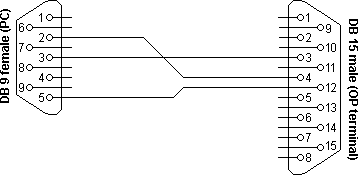


The pinouts listed in the schematic for the VXR-9000 are mirrored accordingly you have to connect pin 4 to the sleeve, and pin 1 to the ring (white/blue to sleeve orange/white to the ring). To make this adapter, a female 3.5mm stereo jack must be connected to an RJ-45 cable connect the ring of the jack to the RJ-45 pin 5 (Ground), and the middle ring to pin 8 (Data). Electrically it's identical to a VPL-1, and a simple adapter can be made to use it. The Icom OPC-478 is widely used in Icom HTs, and can be had very cheaply. RF power meter, reasonably accurate for VHF useĪlternately, a radio test set such as a Wavetek 4015 with an appropriate cable set can substitute a number of test instruments.In addition, it's highly recommended to have the following: 2 screw driver (Philips can be used if you're careful) 1mm flat head screw driver for VCO adjustment.RF signal generator with necessary to BNC connector.


Power cable from your supply to 4 mm ring terminals (or the original power cable).Vertex Standard VPL-1 serial adapter cable or equivalent (see below).Windows XP to Windows 10 PC with a spare USB port.The following software, documentation and tooling is required to perform this modification: (Optional) Perform full adjustment procedure.Use the Factory Mode to change the HW type.The following steps are required to convert a VHF C version: I found that all our units were capable of operation around 145 MHz without component changes but for lower frequencies this will probably not work. There are genuine BOM differences between the two versions this includes VCO and filter part value changes. These repeaters were used by public services in the 160-170 MHz range, and are now "obsolete" due to the nationwide switch to TETRA. A number of these repeaters were available in the VHF C variant which does not cover the 145 MHz band. This process was worked out for LA1N, Narviks ham radio group in Norway.


 0 kommentar(er)
0 kommentar(er)
